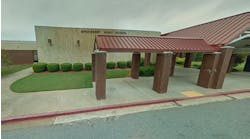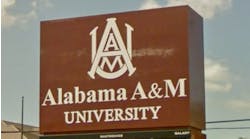College students are, without a doubt, one of the most wired communities in the country. According to a recent Ball State Institute for Mobile Media Research, 99.8 percent of all college students use some kind of mobile device or cell phone on campus. What they may not know is that high level of connectivity may be putting them at greater risk.
Although it may seem counterintuitive, the fact is that more cell phone usage does not necessarily translate into more safety and security. In fact, the opposite might be true: The proliferation of wireless devices actually may diminish the ability of 911 operators and first responders to locate cell phone callers accurately in buildings.
Global positioning system (GPS) satellites are the most commonly used methods for determining the location of a cell phone user. The vast majority of cell phones today include a GPS chip that enables GPS satellites to determine where a particular cell phone is. However, GPS generally is not available when in a tunnel or inside a building because of the construction materials.
The issue is compounded in buildings in which distributed antenna systems (DAS') are employed. DAS' are used to boost radio frequency signals using a network of cable, equipment and antennas. However, they also essentially expand the points of reference used to locate a caller. And with such a high demand for wireless coverage, there is a very good chance campuses use a DAS to increase their wireless coverage.
To put this into perspective, consider that about 70 percent of all 911 calls–about 202,000 every day–are made from wireless phones, according to the FCC. This is particularly significant given more than 68 percent of all wireless calls are made indoors, yet just more than 70 percent of in-building space does not receive sufficient GPS information to accurately locate 911 calls.
Recognizing the need for more accurate location data, the FCC has enacted what is known as E911 Phase 2. Under Phase 2, wireless network operators must provide the latitude and longitude of callers within 300 meters, within 6 minutes of a request by a Public Safety Answering Point (PSAP). This information, however, pertains primarily to outdoor locations.
Although GPS generally is sufficient for outdoor caller location, the issue of indoor location accuracy is only beginning to receive the attention it deserves. There are a number of emerging technologies, however, that address this problem.
Pilot beacons transmitters, for example, attach to existing DAS systems and can improve location accuracy by as much as 2,900 percent. Essentially, the beacons provide additional points of reference that enable the network to better determine the specific location of a handset or mobile device. The position information then can be used to aid a GPS receiver, if present, in acquiring signals, or can be used as a position report. Beacons improve the location information that the public safety answering point (PSAP) uses to facilitate dispatch to first responders, thereby increasing the likelihood of a timely response in emergency situations.
Just how well do these work? At one major university in the Southwest where beacons were installed, location accuracy improved from more than 400 meters to within 50 meters. In another facility, beacons improved location accuracy from more than 1,500 meters to under 50 meters. To put this in perspective, that’s the difference between first responders looking for a student who made an emergency call as far as a quarter-mile away from where the student actually is and first responders looking for a student in a particular area of a sporting arena, where the student is actually calling from.
Although it may be awhile before indoor location accuracy requirements are mandated on the federal level, the safety of students, faculty and staff shouldn’t be a question.
Goodrich is a co-founder and president, product division, of Cellular Specialties, Inc. , Manchester, N.H., and has more than 14 years of experience delivering in-building wireless products and services. He can be reached at (877)844-4CSI.



